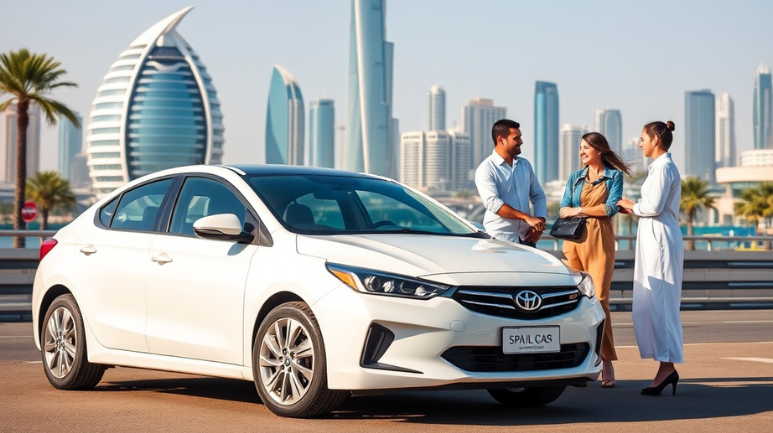Contents
- 1 Understanding Third Party Car Insurance
- 2 What Is Third Party Car Insurance
- 3 At-Fault vs. No-Fault Insurance Rules
- 4 Illustration of a Third-Party Insurance Claim
- 5 How to Purchase Third Party Car Insurance
- 6 What Third Party Car Insurance Covers and What It Does Not Cover
- 7 Third-Party Car Insurance Claims
- 8 Types of Third-Party Liability Insurance
- 9 Characteristics of Third-Party Liability Car Insurance Policies
- 10 How Third-Party Insurance Claims Operate
- 11 Cost of Third Party Car Insurance
- 12 Understanding Third-Party Insurance Policies
- 13 Conclusion
- 14 Frequently Asked Questions (FAQs)
Third Party Car Insurance is a form of coverage in which an individual (the insured) pays premiums to an insurance provider (the second party) for protection against claims made by a third party. This type of insurance typically manifests as liability or casualty insurance, safeguarding against bodily injury or property damage. Common examples of third party car insurance include homeowners and auto insurance policies. While homeowners are not legally obligated to have this coverage, most states mandate that drivers maintain a minimum level of insurance at all times.
Additionally, businesses can secure third-party insurance to guard against claims resulting from client injuries on their premises or due to a product, as well as financial losses stemming from errors in the business’s services or advice.
Read more: Comprehensive Car Insurance: Essential Coverage for Collisions and Peace of Mind
Understanding Third Party Car Insurance
When it comes to auto insurance, the specific third-party coverage available varies based on whether a state operates under a no-fault or tort (at-fault) system. Generally, third-party coverage is categorized into two main types: bodily injury liability and property damage liability. In tort states, bodily injury liability covers medical expenses for injuries sustained by other drivers or passengers in an accident for which you are at fault.
For instance, if you are responsible for a car accident that results in another driver needing hospital treatment, your insurance will pay their medical bills up to the policy’s limit. This coverage can also compensate the injured party for lost wages and pain and suffering.
The second aspect of third-party insurance in a tort auto policy addresses damage to the other person’s vehicle. If you cause significant damage to another driver’s car in the aforementioned accident, your auto insurance will cover the replacement of that vehicle under your property damage liability.
It can also cover repairs if the car is salvageable and address any other property damage, such as if your vehicle crashes into someone’s home. In such a case, your insurance would pay for the necessary repairs up to the policy limit.
In no-fault states, drivers typically seek medical coverage through their policies under Personal Injury Protection (PIP), regardless of who is at fault. Third-party claims for bodily injury are generally reserved for significant medical expenses resulting in pain and suffering (criteria differ by state), while property damage liability usually pertains to damage inflicted on another person’s property, such as a mailbox or fence. It may also cover damage to the other driver’s vehicle, depending on the state regulations.
Read more: Best Car Insurance in Dubai: Top Choices for Affordable Motor Insurance and Coverage
What Is Third Party Car Insurance

Most states require drivers to have some form of auto insurance, but the specific types and amounts of coverage can vary. Some insurance policies protect you and your vehicle, while others help cover the costs associated with damage you inflict on others. Most states mandate the possession of third-party insurance, also known as liability insurance. This coverage protects you by paying for claims made by third parties whom you have injured or damaged in an accident. In any car accident scenario, the parties involved play distinct roles:
- First Party: This refers to you, the driver involved in the accident. In a first-party claim, you would file a claim with your insurance, such as if you accidentally back into a pole without any other vehicles involved. To benefit from this, you must have comprehensive and collision coverage included in your policy.
- Second Party: This is your insurance company.
- Third Party: This is the other driver involved in the accident, who can file a claim with your insurance for injuries or damages caused by you. Conversely, if you are injured by another driver, you could file a claim against their third-party auto insurance.
Third-party auto insurance, or liability insurance, is activated when you cause an accident that results in property damage or bodily injury to another person. Affected drivers can then submit a claim to your insurance, potentially receiving compensation from your insurer. This coverage can include damages to another driver’s vehicle or someone’s property, such as a house. Depending on the state and specific insurance plan, third-party insurance may also cover medical expenses, lost wages, pain and suffering, and the cost of a rental car.
Read more: Best Third-Party Car Insurance in the UAE
At-Fault vs. No-Fault Insurance Rules
It’s essential to understand the difference between at-fault and no-fault insurance rules. In states that follow at-fault rules, insurance companies assess which driver is responsible for an accident, which could be one driver or both. Conversely, no-fault states have rules that apply specifically to accidents involving bodily injuries.
In no-fault states, drivers are required to carry personal injury protection (PIP) as part of their auto insurance. This coverage pays for medical expenses if a driver is injured in an accident, regardless of who is at fault. However, in cases of more severe injuries, the injured driver may have the option to sue the driver responsible for the accident.
The classification of states as at-fault or no-fault is pertinent only for accidents that result in bodily injury. For incidents involving property damage, both at-fault and no-fault states handle them similarly, holding the driver responsible for the accident liable for the costs incurred. In such cases, the driver whose property was damaged can file a claim against the third-party insurance of the at-fault driver.
Read more: Best Third-Party Car Insurance in Sharjah
Illustration of a Third-Party Insurance Claim
Third-party insurance is designed to alleviate the financial burden resulting from damages or injuries you cause during an accident. Essentially, it protects you from incurring significant out-of-pocket expenses when you are found liable. But how does this work in practice? Consider a scenario where you are driving and become distracted by a new text message. As a result, you fail to notice that the car in front of you has stopped abruptly, leading you to rear-end their vehicle, causing damage and injuring the driver, who sustains a broken arm.
Immediately following the accident, the other driver (the third party) will gather your insurance details and file a claim with your insurer. If you are in a no-fault state and the injuries are minor, the other driver can file a claim with their insurance for medical expenses. If your actions caused damage to their vehicle or other property, they can also file a claim against your insurance. In an at-fault state, the other driver would file claims for both bodily injury and property damage with your liability insurance. If your insurance company approves the claim, they will compensate the driver who submitted it.
However, if the damages exceed your coverage limits, you may need to pay some of the costs out of pocket. It’s important to note that a third-party claim involving you and another driver operates differently from a first-party claim. In a first-party claim, no other parties are involved, and you would file a claim with your insurance to cover damages or injuries. Not all standard insurance policies include this option, so it’s advisable to review your policy details.
Read more: Comprehensive Liability Car Insurance Coverage in the UAE
How to Purchase Third Party Car Insurance

Most typical auto insurance policies already incorporate third-party insurance, also known as liability insurance, as part of their coverage. When you request quotes for car insurance, this third-party coverage is generally included, so be sure to verify this detail.
It’s important to be aware that your policy will have a limit on the maximum amount that can be claimed. If a claim is filed against you that exceeds your liability coverage, you may need to cover the difference out of your funds. Thus, it’s crucial to thoroughly review your policy terms to understand the extent of your coverage.
You typically have the option to adjust your coverage limits, provided you meet the minimum requirements. If you feel that the third-party coverage offered by an insurer is insufficient for protecting you in the event of causing damage or injury, you can usually pay a higher premium for expanded coverage options with that same company.
Read more: Affordable Basic Car Insurance in the UAE
What Third Party Car Insurance Covers and What It Does Not Cover
Third-party car insurance does not encompass every situation, even if you are deemed not at fault in an accident.
Coverage Details:
- In At-Fault States: If you are found responsible for an accident, you are liable for covering the other party’s medical expenses and property damage costs.
- In No-Fault States: In these states, you are responsible only for paying the other party’s property damages. Each driver’s insurance will cover their medical expenses, lost wages, and other economic losses.
Exclusions:
Third-party car insurance does not cover:
- Theft.
- Vandalism.
- Weather-related damages.
- Damage from potholes.
In summary, third-party liability insurance does not protect against events that comprehensive insurance covers, such as damages to your vehicle caused by anything other than another vehicle.
Read more: Quick Car Accident Claims with Third-Party Insurance in the UAE
Third-Party Car Insurance Claims
A third-party claim involves payments made to someone other than the insured individual or their insurer. This typically occurs when the insured party is found responsible for causing damages. For example, if your homeowner’s insurance reimburses you for roof repairs, that is considered a first-party claim. Conversely, if the insurance covers the medical expenses of someone who slipped on your front steps, that qualifies as a third-party claim.
- To initiate a claim, reach out to your insurance provider and provide them with the details of the accident. It’s essential to include a police report with your claim, which is why you should always contact the police after a car accident, regardless of fault.
- Your insurance company will then get in touch with the insurance provider of the other party involved and assist you in filing a claim with them.
- To ascertain fault, you will collaborate with either a claims representative or an insurance adjuster. They will collect information about the accident from both parties and may either conduct an in-person inspection of the vehicle or analyze photos, along with the police report.
- The adjuster will establish who is at fault, and the party found responsible will be liable for covering the medical and/or property damage costs of the other party, depending on the state laws.
- The third-party insurer will either reimburse the first party for their expenses or directly pay a repair shop for the necessary repairs.
Read more: Best Third-Party Car Insurance Policies in the UAE
Types of Third-Party Liability Insurance
Third-party insurance is fundamentally a type of liability insurance. The insured party is held responsible for their damages or losses, regardless of the cause. One of the most prevalent forms of third-party insurance is automobile insurance. Third-party insurance protects against claims for damages and losses incurred by a driver who is not the insured individual. The driver responsible for the damages is referred to as the third party. Within auto insurance, there are two types of third-party liability coverage:
- Bodily Injury Liability (BIL): This covers expenses arising from injuries to individuals, including hospital expenses, lost wages, or compensation for pain and suffering resulting from an accident.
- Property Damage Liability (PDL): This covers costs related to damages or loss of property, such as replacing landscaping features, and mailboxes, or compensating for the loss of use of a structure.
In some instances, third-party insurance is mandated by law. For example, drivers are typically required to carry a minimum amount of bodily injury liability and property damage liability coverage. These legal requirements can vary by state, with some states having no requirement for one or both types of coverage, while other states establish specific minimums for each category.
Even in “no-fault” states, having liability coverage is crucial. No-fault laws do not shield you from potentially costly lawsuits stemming from serious injuries to third parties. No-fault laws were implemented to minimize or eliminate commonplace injury lawsuits that involve small claims and a high volume of pain and suffering claims.
Both types of third-party insurance are vital for individuals, such as homeowners, who have significant assets to protect. The greater the amount of money and assets the insured person possesses, the higher the limit should be for each type of liability coverage.
Characteristics of Third-Party Liability Car Insurance Policies

A Third-Party Liability policy not only protects you but also ensures the safety and security of others. This type of insurance covers your legal responsibilities towards third parties for bodily injuries (including fatalities) and property damage resulting from incidents involving your vehicle. Below are the key features of a third-party car insurance policy:
Protection Against Third-Party Liabilities
If you incur financial responsibility due to bodily injury, death, or property damage inflicted on another person, this is classified as a third-party liability. A third-party car insurance policy offers protection for these liabilities. Should you be held accountable, the policy will compensate the affected third party on your behalf.
Affordability
The premiums for third-party car insurance are regulated by the Insurance Regulatory and Development Authority of India (IRDAI). These premiums are determined by factors such as the cubic capacity and category of the car, resulting in relatively low costs.
Mandatory Coverage
Under the Motor Vehicles Act of 1988, carrying third-party car insurance is a legal requirement. Therefore, if you own a vehicle, obtaining this coverage is compulsory.
Extended Coverage Period
For new vehicles, third-party coverage can be obtained for a prolonged duration of three years, eliminating the need for annual renewals.
Comprehensive Coverage Limits
The third-party policy covers bodily injuries and fatalities up to the amount adjudicated by the motor tribunal, regardless of the liability amount. Property damage is covered up to a limit of Rs.7.5 lakhs.
Online Insurance Options
With comprehensive plans, you can access cashless claim settlements for repairs by using a partnered garage.
How Third-Party Insurance Claims Operate
The claims process for third-party insurance unfolds as follows:
- If you’re involved in a car accident, you should inform your insurance provider. Be prepared to collect relevant details about the incident, which may include an accident report, photographs, and statements given to police officers or other authorities present at the scene.
- Once fault is established, the injured party or the individual whose property was damaged will file a third-party insurance claim with the insurer of the driver deemed responsible.
- If you are found to be at fault and liable for the other driver’s costs, you will need to assess whether to file a claim to cover any repairs to your vehicle.
- After reviewing the expense details, the insurance company will propose a settlement to the third-party claimant, provided the damages fall within the scope of the policy.
If a third-party claim is made against you for damages you have caused, the claimant will communicate with your insurance company. If your insurance adequately covers the damages, your insurer will settle the claim up to your policy limits.
Should your car insurance coverage be insufficient to address the damages, you will have to pay the remaining costs out of pocket, thus placing your assets at risk. This claims process is why it is necessary to exchange your driver’s license and insurance details after an accident, no matter how minor it may be.
Read more: Best Third-Party Liability Car Insurance Plans in the UAE
Cost of Third Party Car Insurance

The cost of third-party auto insurance varies based on the level of coverage you select. While the average expense for comprehensive auto insurance stands at approximately $1,721 annually, third-party liability insurance tends to be more economical on its own.
For instance, Policygenius discovered that increasing your bodily injury liability coverage from $50,000 per person/$100,000 per accident to $100,000 per person/$300,000 per accident results in a premium increase of about 6% on average. This implies that for every additional $10,000 of bodily injury coverage per person, you would pay roughly $20 more in premiums.
Since the cost of third-party insurance is influenced by numerous factors—including your coverage limits, location, driving record, and vehicle type—Policygenius recommends comparing rates from different insurers based on your required level of coverage.
Understanding Third-Party Insurance Policies
Third-party insurance is essentially a contractual agreement between you and an insurance provider. By paying premiums, you secure protection against liability claims made by other parties. This coverage obligates the insurer to defend you and compensate for claims that fall within the policy’s terms, up to the specified limits.
Liability claims arise from incidents where you may have caused harm to others due to negligence. This type of coverage is often referred to as liability insurance. Examples of third-party insurance coverage include:
- Bodily injury liability in auto insurance policies.
- Property damage coverage under your car insurance.
- Professional liability insurance, also known as errors and omissions coverage.
- Legal or medical malpractice insurance.
- Liability clauses within homeowners’ insurance policies.
For instance, suppose Dr. Jones makes an error during surgery that harms a patient. In this case, the patient may file a medical malpractice lawsuit. Dr. Jones’ malpractice insurance would then be responsible for defending him against the lawsuit. If the case results in a settlement, the insurance company would cover the settlement amount, within the limits of the policy.
Similar to first-party insurance, it’s generally advisable to carry as much third-party insurance as possible. Higher policy limits can protect your assets from potential legal claims, while broader coverage ensures you are safeguarded against a wider range of claims.
Conclusion
Third Party Car Insurance is a fundamental type of insurance for drivers seeking essential protection on the road. This coverage primarily offers financial security against damages caused to a third party in the event of an accident where you are at fault. It’s important to understand that in many jurisdictions, third-party insurance is the bare minimum insurance cover required by law, making it a crucial consideration for any vehicle owner.
Choosing the right insurance company for your third-party car insurance can make a significant difference in your experience. It not only helps you handle claims efficiently but also ensures you have the necessary support when it matters most. As you navigate the complexities of this coverage, remember that third-party liability insurance protects others in an accident while shielding you from potentially significant financial burdens.
Whether comparing quotes online or seeking detailed advice from an insurance agent, being well-informed about your options will empower you to make the right choice for your needs. Ultimately, having the right third-party car insurance will provide peace of mind as you drive, knowing you’re covered against unforeseen mishaps.
Frequently Asked Questions (FAQs)
What’s the difference between first-party and third-party insurance?
First-party insurance covers damages or losses incurred by the policyholder or his or her vehicle. Covers the harm sustained. Riots, strikes, earthquakes, floods, fires, theft, and other events can all cause harm. Third-party insurance covers solely the third party’s damages or losses as a result of an accident.
What is third-party insurance coverage?
The third party is the minimal legal need that covers you against damage to someone else’s vehicle or property, as well as injury to others in the event of an accident. This includes any accidents caused by your passenger. It does not cover repairs on your vehicle.
What is the difference between comprehensive insurance and third-party insurance?
The primary distinction between comprehensive and third-party insurance is coverage. While third-party insurance only protects against harm to others, comprehensive insurance covers both personal vehicle damage and third-party liability. Your demands and money will determine which plan is best for you.
What is 1st, 2nd, and 3rd party insurance?
The insured person is referred to as the first party, the second party is the insurance provider, and the third party is the person to whom the first party owes damages in the event of an accident.













